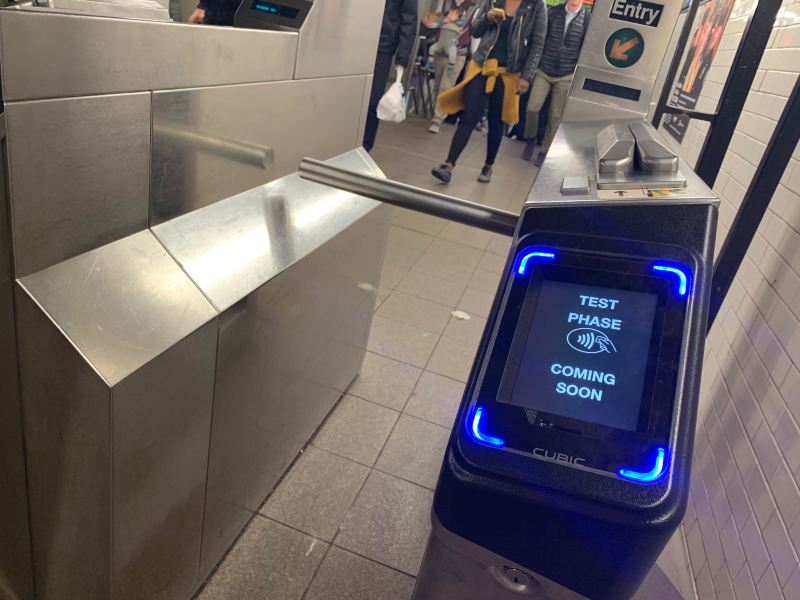Brooklyn Pol Pushes Bill to Require MTA’s OMNY to Serve Poorer Riders Now

Talk about jumping on a moving train.
State Sen. Andrew Gounardes put forward legislation on Thursday to make the MTA’s OMNY fare system truly equitable by ensuring that the new contactless pay system stops charging straphangers for fares once they have paid the equivalent of a monthly or weekly pass — a well-established “unlimited ride” concept known as fare-capping.
MTA officials had said one day earlier that they will roll out such a program — albeit only as a pilot — next year.
Both the bill and the MTA promise stem from widespread confusion on social media earlier this month when a member of the New York City Transit social media team claimed that fare-capping was already in effect — only to have to backtrack when advocates sought to magnify the unheralded announcement.
Hi Seth & Sam – to clarify this a bit… the technology that runs OMNY provides us extra flexibility compared to MetroCard. So while we don't have anything along these lines in place right now, we're exploring many ways we can provide more robust fare options in the future. ^SS
— NYCT Subway (@NYCTSubway) October 17, 2021
The MTA’s public promise to finally initiate fare-capping was first reported by the Daily News.
Until the pilot begins, only MetroCard holdouts have the option of buying unlimited fare cards by the week or the month; such unlimited ride payment schemes are not yet available to OMNY users, even though that payment system is operational across the entire New York City Transit system. Unlike the MetroCard, however, OMNY is more flexible because it could be programmed to simply stop charging whenever a customer has racked up the same number of fares that would equal a monthly or a weekly MetroCard — in essence, giving all riders access to “the freedom of unlimited rides without having to pay up front,” Gounardes’s office said in a statement.
“Continuing the successful unlimited ride pass program is common sense,” Gounardes said. “This legislation will ensure that the OMNY transition protects the most vulnerable commuters while modernizing the MTA’s fare payment system. The transition to OMNY should be as seamless as possible, and mandating this savings program will incentivize ridership and continue to make the subway an affordable option for New Yorkers.”
Advocates were on board with the bill.
“It is an unfortunate truth that while commuters who can afford to pay $127 a month upfront are rewarded with unlimited rides, lower-income transit riders who can’t front the cash often end up paying for more expensive single-ride fares each month,” said Jaqi Cohen of Tri-State Transportation Campaign and formerly with the Straphangers Campaign. “Many low-income New Yorkers don’t meet the threshold to qualify for half-priced MetroCards but are still in need of fare relief. Fare capping would ensure that all riders have access to the same unlimited fare option, whether they could afford to pay upfront or not.”
Danny Pearlstein of Riders Alliance said OMNY is the kind of technology that could “bring transit within reach of more riders” if it includes fare capping.
A recent rider survey by the MTA (albeit reflecting normal, pre-pandemic transit use) shows why fare-capping is so crucial.
In the period studied (mid-2018), roughly 46 percent of all subway, bus and express bus riders were using unlimited 30-day MetroCards vs. roughly 36 percent of weekday subway and bus users paying for each dip of the MetroCard. But the users of monthly MetroCards, which require the payment of $127 up front, are generally more wealthier (or work-from-homers), as the MTA’s own chart below shows:

The MetroCard will go the way of the token (and before that, the nickel) by the end of 2023, the MTA has said.





